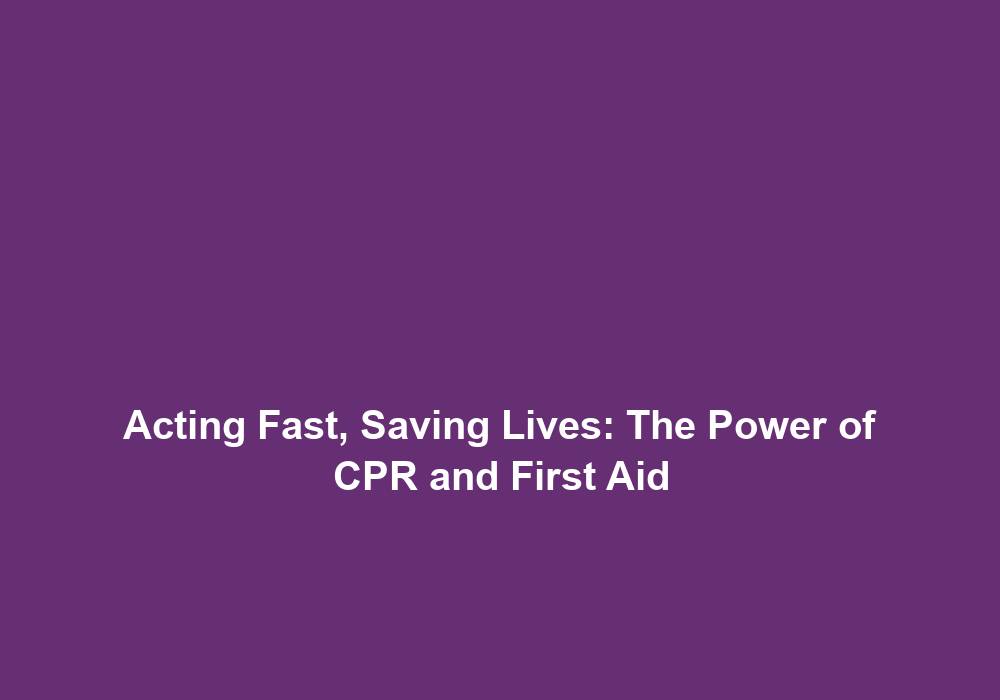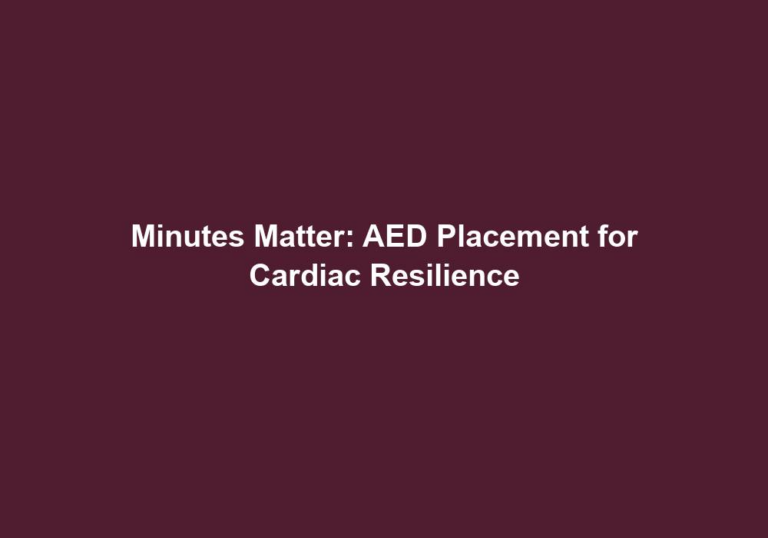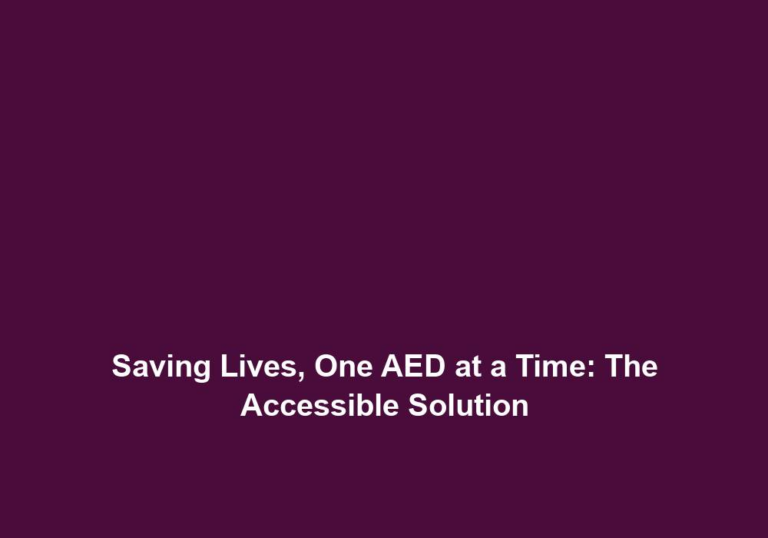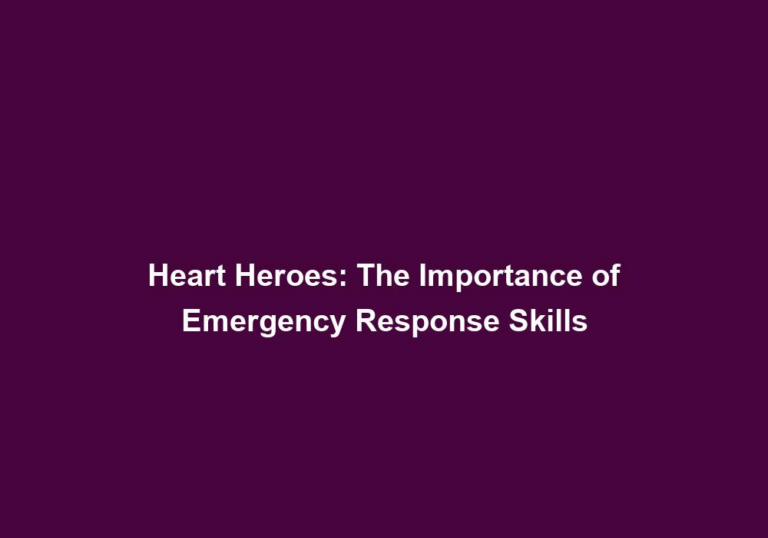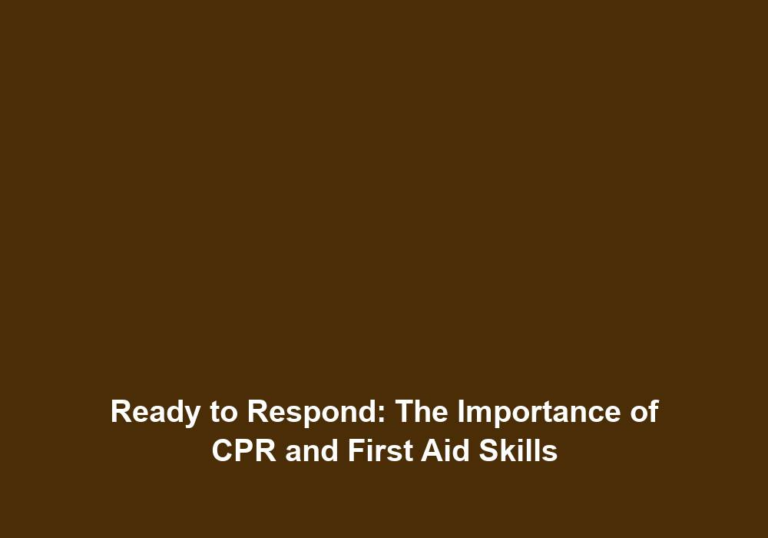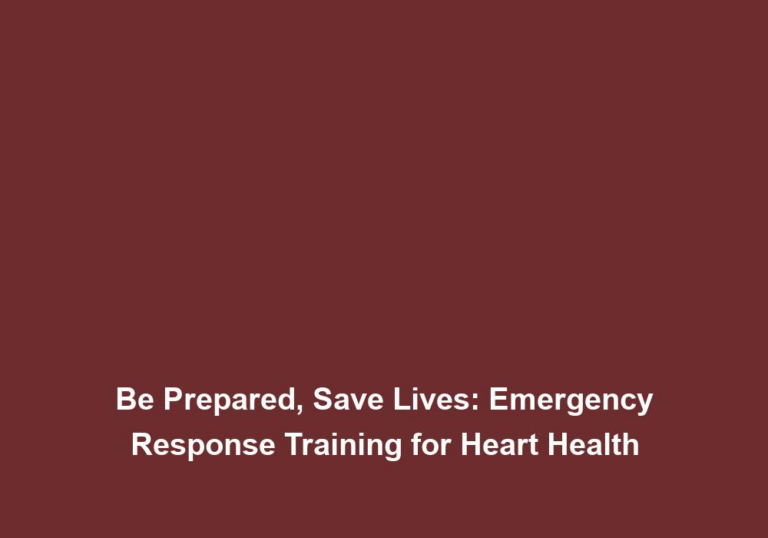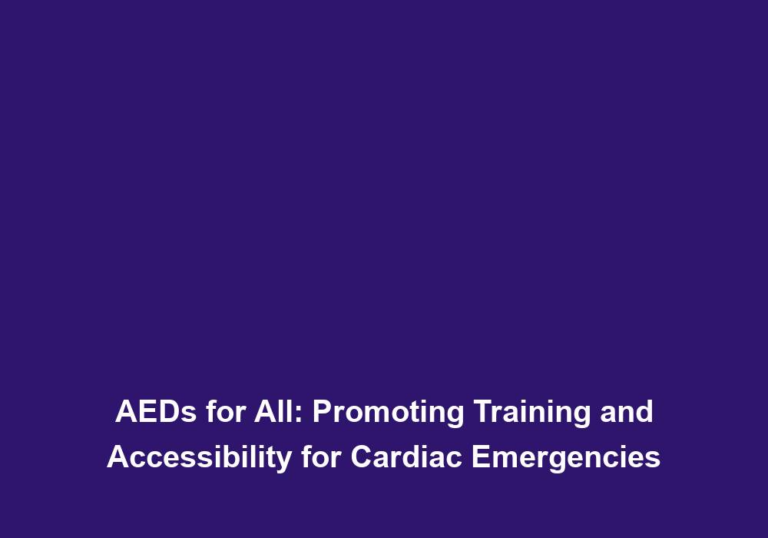Acting Fast, Saving Lives: The Power of CPR and First Aid
When it comes to emergencies, every second counts. Being trained in CPR (Cardiopulmonary Resuscitation) and first aid can make a tremendous difference in saving lives. In this article, we will explore the importance of acting swiftly during emergencies, the vital role of CPR and first aid, and how these skills can empower individuals to become everyday heroes.
The Importance of Acting Swiftly
In critical situations, acting quickly can be the difference between life and death. Whether it’s a sudden cardiac arrest, choking, or an accident resulting in severe injuries, immediate action is crucial. By promptly initiating CPR and providing necessary first aid, you can buy valuable time until professional medical help arrives.
Recognizing the Signs
Recognizing the signs of an emergency is the first step towards taking action. Here are some common indications that someone might need immediate assistance:
- Unconsciousness or altered level of consciousness: If someone is unresponsive or not fully aware of their surroundings, it could be a sign of a medical emergency.
- Difficulty breathing or no breathing at all: When a person is struggling to breathe or has stopped breathing completely, it requires immediate attention.
- Absence of pulse or an irregular pulse: The absence of a pulse or an irregular pulse can indicate a cardiac emergency that requires immediate intervention.
- Severe bleeding: Profuse bleeding can lead to life-threatening situations and requires immediate medical attention.
- Choking or obstruction of the airway: If someone is unable to breathe due to a blocked airway, immediate action is necessary to clear the obstruction.
- Seizures or convulsions: Seizures can be a sign of a serious underlying medical condition and should be addressed without delay.
If you witness any of these signs, it is important to act swiftly without delay. Time is of the essence in these situations, and your quick response can make a significant impact on the outcome.
Understanding CPR
Cardiopulmonary Resuscitation (CPR) is a life-saving technique performed on individuals who are not breathing or do not have a pulse. It involves manually compressing the chest and providing rescue breaths to circulate oxygenated blood throughout the body.
The Steps of CPR
Performing CPR can be broken down into these essential steps:
- Ensure safety: Before approaching the situation, ensure the safety of both yourself and the victim. Look out for any potential hazards or dangers that could put you or the victim at risk.
- Check responsiveness: Gently tap or shake the victim to check if they respond. Lack of response indicates the need for CPR.
- Call for help: Call emergency services immediately or ask someone nearby to do so. The sooner professional help arrives, the better the chances of a positive outcome.
- Open the airway: Tilt the victim’s head back and lift the chin to open the airway. This helps ensure a clear passage for air to enter the lungs.
- Breathing check: Look, listen, and feel for signs of breathing for no longer than 10 seconds. If there is no breathing, it is necessary to proceed with CPR.
- Chest compressions: Begin chest compressions by placing the heel of your hand on the center of the victim’s chest. Push hard and fast at a rate of 100-120 compressions per minute. This helps circulate blood to vital organs.
- Rescue breaths: Give two rescue breaths by pinching the victim’s nose, making a seal with your mouth over theirs, and blowing until you see the chest rise. This provides oxygen to the lungs.
- Continue cycles: Alternate between chest compressions and rescue breaths until professional help arrives or the victim shows signs of recovery. Consistency is key in maintaining blood circulation.
Remember, CPR is a skill that requires regular training and practice to maintain proficiency. Participating in certified training programs and staying updated with the latest techniques and guidelines is crucial to ensure the best possible outcomes.
The Role of First Aid
First aid is the immediate care provided to an injured or ill person, often before professional medical help is available. It aims to stabilize the individual’s condition, prevent further harm, and promote recovery.
Common First Aid Techniques
First aid techniques can vary depending on the situation, but some common practices include:
- Stopping bleeding: In the case of bleeding, apply direct pressure to the wound using a clean cloth or bandage. This helps control bleeding and promotes clot formation.
- Treating burns: For burns, running cool water over the affected area for a few minutes can help alleviate pain and prevent further damage. Covering the burn with a sterile dressing is also recommended, and seeking medical attention if necessary.
- Managing fractures: When dealing with fractures, it is important to immobilize the injured area with a splint or makeshift support until medical help is available. This helps prevent further injury and minimizes pain.
- Handling head injuries: In the case of head injuries, it is crucial to keep the person still and call for emergency assistance. Removing helmets should be avoided if the individual was wearing one during an accident, as it can worsen the injury.
- Dealing with shock: If someone is in shock, laying them flat and elevating their legs slightly can help improve blood flow to vital organs. Covering them with a blanket or jacket also helps maintain body temperature.
It is important to remember that first aid should only be administered within the limits of your training and knowledge. If unsure about the appropriate course of action, seek professional medical help immediately.
Becoming an Everyday Hero
By obtaining training in CPR and first aid, you can become an everyday hero in your community. These skills provide you with the confidence and ability to respond effectively during emergencies, potentially saving lives. Moreover, having CPR and first aid certifications can make a significant difference in various professional fields, such as childcare, healthcare, and public safety.
The Importance of Training
To become proficient in CPR and first aid, it is essential to participate in certified training programs. These programs offer hands-on practice, theoretical knowledge, and the opportunity to learn from experienced instructors. Regular re-certification or refresher courses are also recommended to ensure you stay up-to-date with the latest techniques and guidelines. This continuous learning helps maintain your skills and confidence in emergency situations.
Conclusion
Acting swiftly during emergencies can truly be a life-saving act. By learning CPR and first aid, you equip yourself with the necessary skills to aid those in need. Whether it’s a family member, a friend, or a stranger, your ability to act promptly can make a profound difference. Remember, every second counts, and you have the power to be an everyday hero through CPR and first aid.

